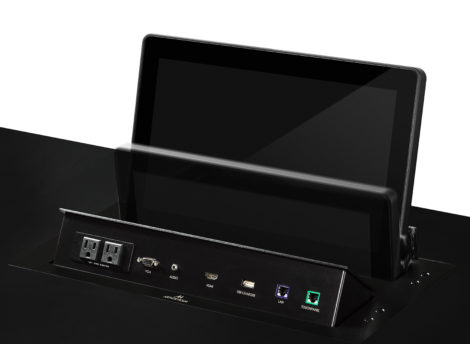The term BYOD was first coined in 2009 by Intel, when it acknowledged an increasing trend among its employees to bring their own devices (e.g. tablets, smartphones, laptops) to work, and connect them to the corporate network. Of course, bringing personal devices into the workplace offers both benefits and risks, the main ones being that although the ability to allow staff to work anytime, anywhere on any device provides business advantages, the risks can mean data breaches, and sensitive information getting into the wrong hands.

As the demand for mobility and convenience exploded so the sales of tablets overtook those of PCs and laptops, and these along with smartphones are the preferred devices of most people. (In the same way, IP-and web-enabled communication devices are replacing fixed telephones as the main means of voice/video interaction in commercial and educational sectors). This new trend also prevents IT from having to continuously keep up with new technology available on the market, which recently has become a complex and constantly growing challenge.
Obviously, a large number of smartphones and tablets are employee owned, and the demand has increased from staff to be allowed to connect their own devices to corporate networks and use them for business purposes – both for communication and internet access, and to enable connection to AV devices for presentation and collaboration. While this BYOD trend can be beneficial to companies, it brings with it problems. This has led to some companies, especially larger ones, blocking the use of personal devices and not permitting them to be connected to in-house IT networks.

Some organisations have taken a new security approach by implementing a parallel AV network not connected to the main corporate IT network. This offers several advantages: it provides complete security by preventing connection between the two networks; permits the use of most AV devices on the AV network without worry; and separates out bandwidth-draining AV processes.
As long as the AV device has a MAC address, some WiFi switches can enable access to them while limiting it to other connected devices.
This is all part of the design and configuration process of the system. There is a strong need for AV integrators to work closely with IT departments to ensure that BYOD works well with AV equipment.
However, as some companies don’t allow employee-owned devices into their systems, a new CYOD “choose-your-own-device” programme is fast becoming an option. CYOD means that companies can offer their employees the choice or pre-determined and approved devices (that can either be paid for and owned by the employees, or loaned by the companies). This allows organisations to better control and manage the access of networks by employee devices and enables the wider system, including AV devices, to be integrated into the solution in a more efficient and effective way.
Arthur Holm offers innovations that include personal device connections for large and small presentations, whether it be for solutions which provide signal distribution, selection, share and control (DynamicShare), or for a personalised BarConnect, that is available as a tailor-made modular connection bar, or customized with a retractable monitor. All products have a high security level and are HDCP compliant.

See the DynamicShare in action here: https://vimeo.com/195294734
See the BarConnect in action here: https://vimeo.com/235719052
Read some companies’s BYOD experiences here: https://www.theguardian.com/small-business-network/kia-fleet-partner-zone/2017/jan/23/bring-your-own-device-weighing-up-the-business-benefits
